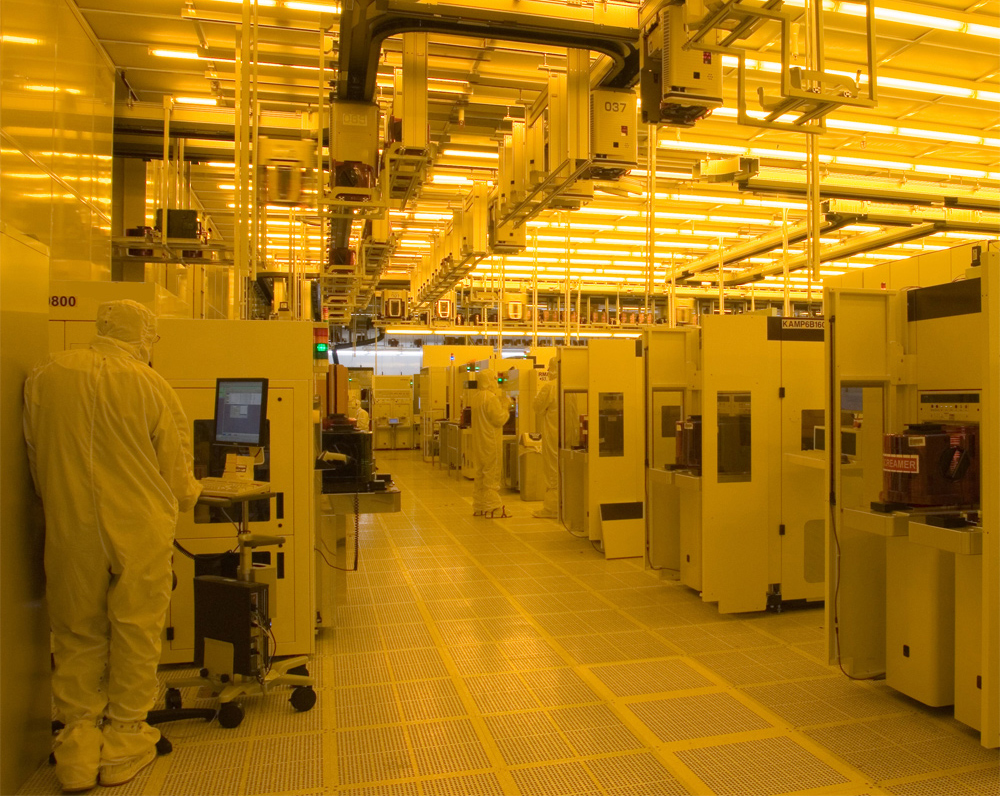Micron's Fab Goes Offline for One Hour, DRAM Prices Go Up
Micron fab suffers power outage, some wafers might have to be scrapped.
One of Micron's fabs in Taiwan went offline on Thursday, which startled the market and sent memory spot prices upwards due to supply uncertainty. As a result, while the impact of the disruption is unclear, Micron's stock upticked. The fab typically pumps out approximately 8.8% of the global DRAM supply.
Micron's Fab 11, located near Taoyuan City, was taken offline by an unexpected power outage that lasted for a little over an hour. According to United News, the factory immediately activated its safety mechanisms and procedures to avoid casualties and minimize losses. After the power supply resumed, the factory restarted, and the company is now assessing the consequences of the outage.
Micron Technology Taiwan's fab near Taoyuan — which used to belong to Inotera, a DRAM maker that Micron took over several years ago — is one of Micron's two major DRAM production facilities in Taiwan. The other one is located near Taichung.
Production capacity of Micron's Fab 11 near Taoyuan is about 125,000 wafer starts per month, which represents about 8.8% of the global DRAM supply, reports United News citing TrendForce. The production facility mostly makes DDR4 and LPDDR4 memory using 10 nm-class process technologies.
Large production facilities have various fail-safe mechanisms to minimize production loss because of power outages that happen in Taiwan fairly often, largely due to earthquakes. Meanwhile, it is almost inevitable that some wafers get damaged by outages and have to be scrapped, which affects supply. Typically, there are thousands of wafers processed at a fab at the same time. Nowadays, DRAM production cycles can span for up to 2.5 months, so the outage affected wafers that were in different stages of production.
It should be noted that restarting production tools at a semiconductor fab takes a long time even if they are undamaged, affecting DRAM output. Obviously, production equipment that sits idle generates losses for its owner. The good news is that Micron believes that it's Fab 11 can return to normal operation in a matter of days, the company told us:
“Micron experienced a power outage at its DRAM fabrication facilities in Taoyuan, Taiwan, on Thursday, Dec. 3,” the statement by the company reads. “Our emergency response procedures were implemented immediately, and all team members are safe. The power has been restored, and all the facility systems are operating normally. We estimate that the fab will return to normal production within the next few days.”
Get Tom's Hardware's best news and in-depth reviews, straight to your inbox.
Meanwhile, the development is good news for memory makers. Because of supply uncertainties, spot DRAM prices increased on Thursday, which is a positive factor for all memory makers. Therefore, as reported by SeekingAlpha, Micron's shares jumped on the report.

Anton Shilov is a contributing writer at Tom’s Hardware. Over the past couple of decades, he has covered everything from CPUs and GPUs to supercomputers and from modern process technologies and latest fab tools to high-tech industry trends.
-
Shadowclash10 Wow.Reply
It would have been nice to have some examples of exactly how much DRAM prices went up by. -
USAFRet Reply
"sent memory spot prices upwards due to supply uncertainty. "Shadowclash10 said:Wow.
It would have been nice to have some examples of exactly how much DRAM prices went up by.
That does not yet relate to the shelf price that you and I pay. If at all. -
watzupken This is silly. 1 hour outage and prices trend upwards. Shows that people are just very antsy.Reply -
USAFRet Reply
Not people...speculators.watzupken said:This is silly. 1 hour outage and prices trend upwards. Shows that people are just very antsy. -
DZIrl Yeah, whole world chip production (high end) is on Taiwan. We all are well aware of this - NVidia, AMD.Reply
Imagine what will happen if something goes wrong! A small earthquake for example!
Only one who will survive is Intel :) -
coolestcarl I find it surprising that large high value facilities of Micron do not have a seamless power backup for protecting the most vital parts of the production process. I know for example near us the steel production facilities have their own power generation facilties onsite (windmills and solar with onsite power storage) because its cheaper and more cost effective to produce your own than take all the power from the grid alone. And steel production is a power intensive process compared to chip manufacture.Reply -
coolestcarl Reply
Yes this has always worried me from a global geo strategic point of view. Taiwan's contribution is incredibly vital to the modern world. It would make sense to diversify the supply of critical chip components and not have all the technological eggs in one basket to protect against both natural and man made dangers (aka superpower political football).DZIrl said:Yeah, whole world chip production (high end) is on Taiwan. We all are well aware of this - NVidia, AMD.
Imagine what will happen if something goes wrong! A small earthquake for example!
Only one who will survive is Intel :) -
jkflipflop98 Replycoolestcarl said:I find it surprising that large high value facilities of Micron do not have a seamless power backup for protecting the most vital parts of the production process. I know for example near us the steel production facilities have their own power generation facilties onsite (windmills and solar with onsite power storage) because its cheaper and more cost effective to produce your own than take all the power from the grid alone. And steel production is a power intensive process compared to chip manufacture.
A solar array large enough to actually power a steel mill would be absolutely massive. I seriously doubt your local one is fully powering a group of smelting furnaces around the clock. Chip production is equally as energy intensive as a steel mill. Diffusion furnaces and plasma etchers take a mind-blowing amount of energy to run. And you have 100's of them to power at a time.
Fab facilities like this do indeed have emergency power storage and generation, but it's not nearly enough to keep the fab fully functional. It's to protect your most critical systems while everything else can be brought back up comparatively quick. -
panic686 I thought it was refreshing that the company's statement focused on worker safety first before anything else. That was nice to see for once.Reply

